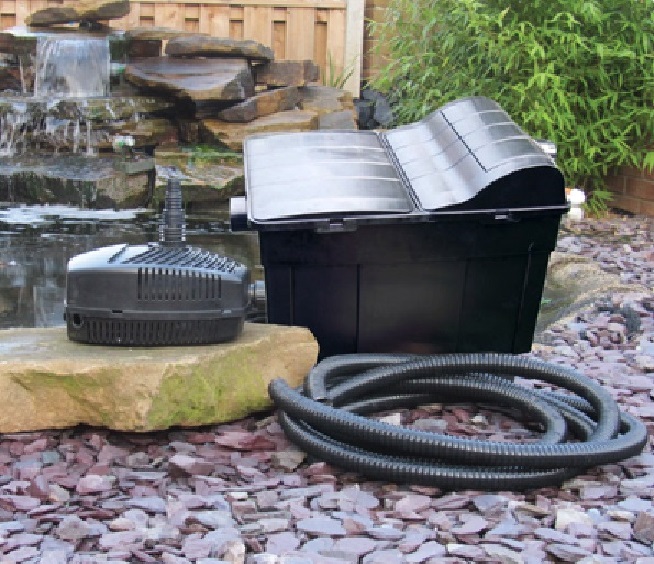
With such a wide range of equipment out there, it can be difficult to know where to start when choosing your pump and filter.
Choosing a pump & filter
With such a wide range of equipment out there, it can be difficult to know where to start when choosing your pump and filter. Thankfully we have created this handy guide to assist you in making that decision!
Regardless of the type of pond you have, the first thing you need to do is work out the volume of water that we are dealing with. To do this, please follow the calculation below:
N.B. This calculation will provide your pond volume in litres.
Length of pond (m) x Width of pond (m) x Depth of pond (m) x 1000.
e.g. If your pond measured 3m x 2m x 1m then the calculation would be 3 x 2 x 1 x 1000 = 6000
Therefore, your pond volume would be 6000 litres.
Now that the pond volume is known, you can follow our easy guide to work out which equipment you will need. The requirements differ depending on the type of pond you have so please see the relevant section below:
Wildlife Pond (no fish)
You will not require a pump or filter for a wildlife pond because, as the name suggests, it is a haven for wildlife and should not be squeaky clean. The water will cloud over from time to time and you will get over-invasive plants which seem to come from nowhere. Where necessary, take off or pull out vegetation to maintain some open surface water.
Goldfish Pond
When keeping goldfish, it is advised that you turn the full volume of your pond over once every 2 hours. We recommend selecting a pump with a flow rate that is ½ the size of your pond e.g. If your pond is 6000L then you will need to select a pump with a flow rate of 3000LPH, such as the UltraFlow 3000. You can use a pressurised filter system when keeping goldfish and want to look for one that matches the size of your pump. The maximum flow rate of the filter must be equal to, or more than, the maximum flow rate of the pump e.g. A SpinClean 6000 filter has a maximum flow rate of 4500LPH so would be ideal to use with the UltraFlow 3000 we selected earlier.
To make things easier, why not have a look at our pump & filter sets!
Koi Pond
When keeping koi, it is advised that you turn the full volume of your pond over once an hour. This is necessary due to the amount of waste that koi produce, it can build up really fast! To ensure the full volume of the pond is turned over once an hour you will need to select a pump that matches the size of your pond e.g. If your pond is 6000L then you will need a pump with a flow rate of 6000LPH, such as the UltraFlow 6000. It is essential that you use a box filter when keeping koi as they offer a much higher level of filtration than pressurised filters. You need a filter that matches the size of your pump. The maximum flow rate of the filter must be equal to, or more than, the maximum flow rate of the pump e.g. A FiltoBox 12,000 has a maximum flow rate of 6000LPH so would be ideal to use with the UltraFlow 6000 we selected earlier.
To make things easier, why not have a look at our pump & filter sets!
Glossary
Box Filter – A non-pressurised filter that uses gravity to draw water through. These filters must be placed at the edge of the pond and above the surface level of the water to ensure water can flow out naturally. Water flows through them slowly which allows for a high level of filtration to take place as it spends longer within the unit.
Filter Pump – Solids-handling pond pumps designed to run 24/7 for pushing dirty water to a filter, their high-volume rate also makes them ideal for waterfalls. The pump itself provides NO filtration and simply feeds water to a filter.
Flow Rate – The speed in which water is moving (either through a pump or a filter)
Pressurised Filter – A sealed, pressurised filter. Water flows through these filters much more quickly as they are sealed units and thus maintain the pumps pressure. The major benefit of this is that they can be placed away from the edge of the pond with extra hose bringing the water discretely back to the pond. They can also be placed below the level of the pond as the water maintains its pressure.
